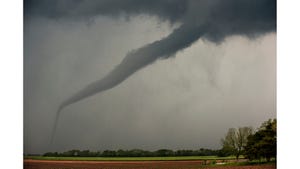Pneumatic Conveying – Why Velocity is King!
November 18, 2013
Pneumatic conveying has been used for many decades as a convenient and flexible method of material transport, especially for ‘in-plant’ operations. Hence, it is used for may process industry operations in the food, chemical, plastics, and pharmaceutical industries, among others. The advantages of pneumatic conveying are many including: the enclosed nature of the system; the ability to be easily routed; the ability to automate relatively easily and the relative ease with which multiple pick up and/or multiple drop-off points are possible. There are, of course, some draw backs, particularly around energy consumption and the fact that the performance of these systems is so heavily dependent on the nature and properties of the bulk materials. However, for many ‘in-plant’ transportation operations there are very few, if any, suitable alternatives.
I recently asked an innocent question of a group of undergraduate students with regard to the design assignments they had been set. I asked how they were getting on with the belt conveyor design assignment and how it compared to the pneumatic conveyor design assignment that they had recently completed. These assignments had been taken anonymously from real plant situations, and the students were confronted with most of the real issues that a designer would face. They immediately responded that with belt conveying they could see (or imagine) what was happening to the material on the belt, whereas, in pneumatic conveying they had real difficulty understanding what was going on in the pipeline. This, of course, is often the case for engineers in industry, and makes troubleshooting an industrial system quite difficult.
During the many years of working with pneumatic conveying, I have often tried to distil the key issues that lead to reliable operation. Whilst it is essentially the air mass flow rate, solids mass flow rate, and the associated pressure drop that defines the operating point of the system, it is the velocity at the feed point that has a massive impact on the performance of the conveyor. The appropriate choice of this velocity has a number of effects. First, it ensures that the bulk material is effectively entrained. Second, the choice of pick-up velocity in combination with the conveying line pressure drop will dictate the velocity profile along the pipeline. Minimizing the feed point pick-up velocity will minimize the velocity along the entire pipeline. This is vitally important since the pressure drop is proportional to the square of the velocity and hence an unnecessarily high pick-up velocity will limit the conveying capacity.
This, of course, leads to the question regarding what pick-up velocity should be used. However, this is not a simple question. For materials that are only capable of dilute-phase conveying, the saltation velocity is often specified. However, for materials that have dense-phase capability, there is little alternative to testing the material and determining the minimum transport velocity practically.
However, the importance of gas velocity in pneumatic conveying is generally massively underestimated. First, the overall performance of the system is dependent on the velocity profile throughout the pipeline which means that stepping the pipeline is essential for higher pressure drops in order to adequately control the velocity range. Essentially, the conveying rate depends directly on the velocity range – too high a velocity range will reduce the conveying rate that can be achieved. In addition, systems that convey a range of different bulk solids will require differing velocity requirements for each of the individual materials. In order to optimize system performance, adequate control of the gas velocity is essential. With the availability of economical variable speed drives for air movers and the availability of variable diameter Laval nozzles combined with smart pressure devices, the option to control air flow rates for different conditions has never been easier.
So whether optimizing and up rating an existing system or specifying a new system, paying attention to the velocity profile is essential and is the parameter that will have the largest effect on overall system performance. New approaches to controlling the air (or gas) velocity now make velocity control so much easier.
M. G. Jones, PhD, is the head, School of Engineering, University of Newcastle; director, TUNRA Bulk Solids Handling Research Associates (TBS); director, Centre for Bulk Solids and Particulate Technologies (CBSPT), University of Newcastle.
For related equipment reviews, articles, and news, visit our Pneumatic Conveying Equipment Zone
Click here for information about International Powder & Bulk Solids Conference & Exhibition
You May Also Like


